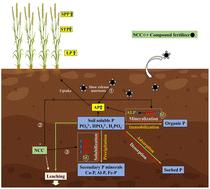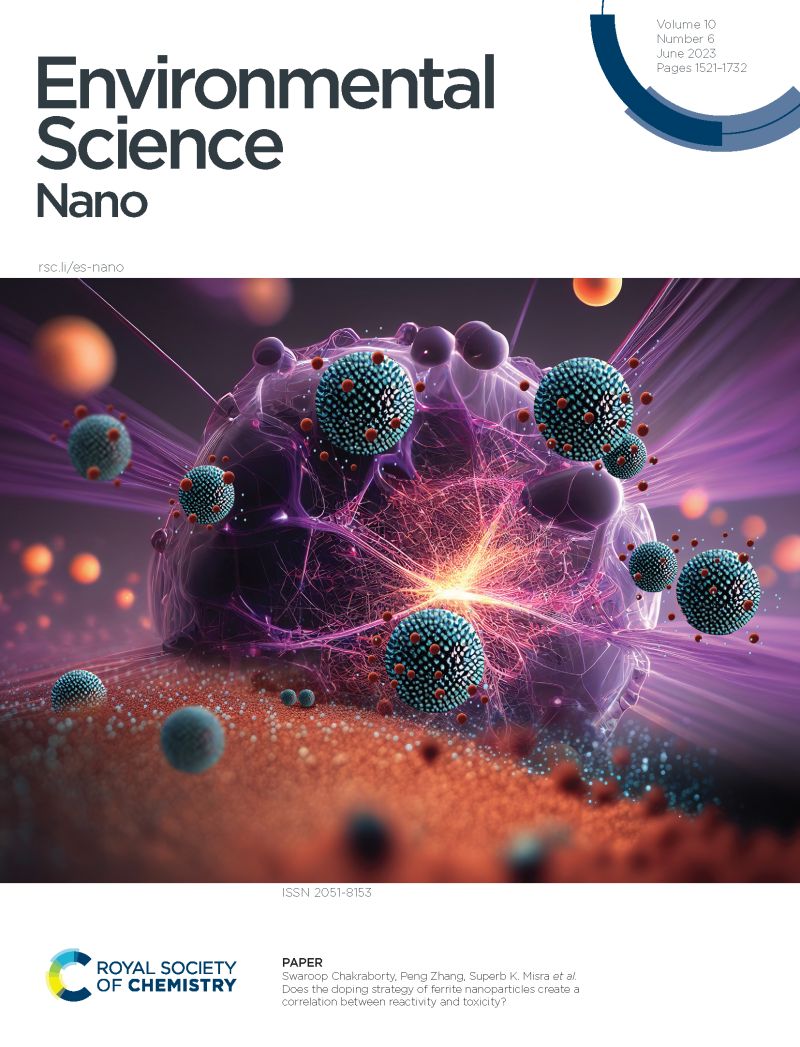Nano calcium carbonate promotes phosphorus uptake in wheat by modulating the rate of phosphorus release and facilitating soil bacterial-mediated phosphorus morphological transformation processes
IF 5.8
2区 环境科学与生态学
Q1 CHEMISTRY, MULTIDISCIPLINARY
引用次数: 0
Abstract
In order to reduce phosphorus (P) losses due to P leaching, enhance the adsorption capacity of soil for P, and ensure environmental safety and optimal crop growth, a multitude of calcium-containing natural minerals and industrial-synthesized materials have been employed in a vast array of applications. However, the potential of nano calcium carbonate (NCC) with high surface electronic activity and a large specific surface area to serve as ideal slow-release P fertilizers has rarely been explored in academic research. In this study, the optimum application rate of NCC and its effect on soil P processes were determined by setting up five different treatments, namely, 0 NCC, 0.15% NCC, 0.30% NCC, 0.45% NCC, and 0.60% NCC, through a soil column leaching experiment as well as a two-year field experiment (2020–2022). The results showed that all treatments of NCC reduced leaching losses of soluble P. Compared with 0 NCC, 0.30% NCC and 0.45% NCC increased soil available P (AP) content and alkaline phosphatase (ALP) activity. In comparison to the 0 NCC, the 0.30% NCC treatment resulted in a notable increase in the relative abundance of several bacterial groups, including Actinobacteria, Acidobacteria, Haliangium, Solirubrobacter, Actinoplane, Nocardioides, Dongia, and Gemmatimonas. Additionally, the relative abundance of ppx, ppa, and phoD was elevated, while the relative abundance of Firmicutes, Bacillus, phnE, and phnC was reduced. The 15% NCC treatment resulted in a notable increase in the abundance of gcd. NCC treatments increased P concentrations in wheat stems, leaves, and spikes. NCC promoted wheat P uptake by regulating the rate of P release, and by activating ALP activity and increasing soil AP content by promoting soil bacterial-mediated mineralization of organic P and solubilization of inorganic P.

求助全文
约1分钟内获得全文
求助全文
来源期刊

Environmental Science: Nano
CHEMISTRY, MULTIDISCIPLINARY-ENVIRONMENTAL SCIENCES
CiteScore
12.20
自引率
5.50%
发文量
290
审稿时长
2.1 months
期刊介绍:
Environmental Science: Nano serves as a comprehensive and high-impact peer-reviewed source of information on the design and demonstration of engineered nanomaterials for environment-based applications. It also covers the interactions between engineered, natural, and incidental nanomaterials with biological and environmental systems. This scope includes, but is not limited to, the following topic areas:
Novel nanomaterial-based applications for water, air, soil, food, and energy sustainability
Nanomaterial interactions with biological systems and nanotoxicology
Environmental fate, reactivity, and transformations of nanoscale materials
Nanoscale processes in the environment
Sustainable nanotechnology including rational nanomaterial design, life cycle assessment, risk/benefit analysis
 求助内容:
求助内容: 应助结果提醒方式:
应助结果提醒方式:


